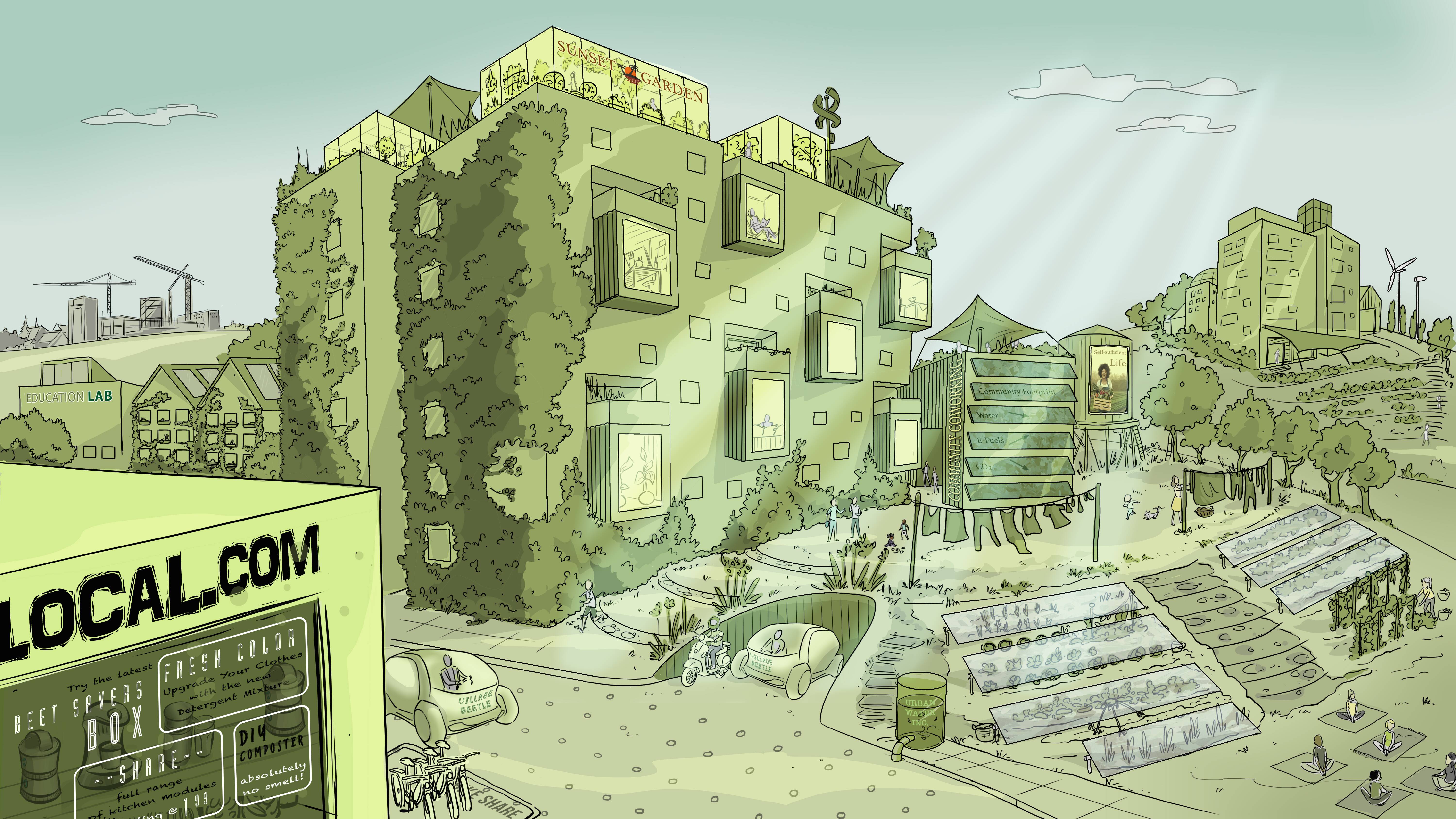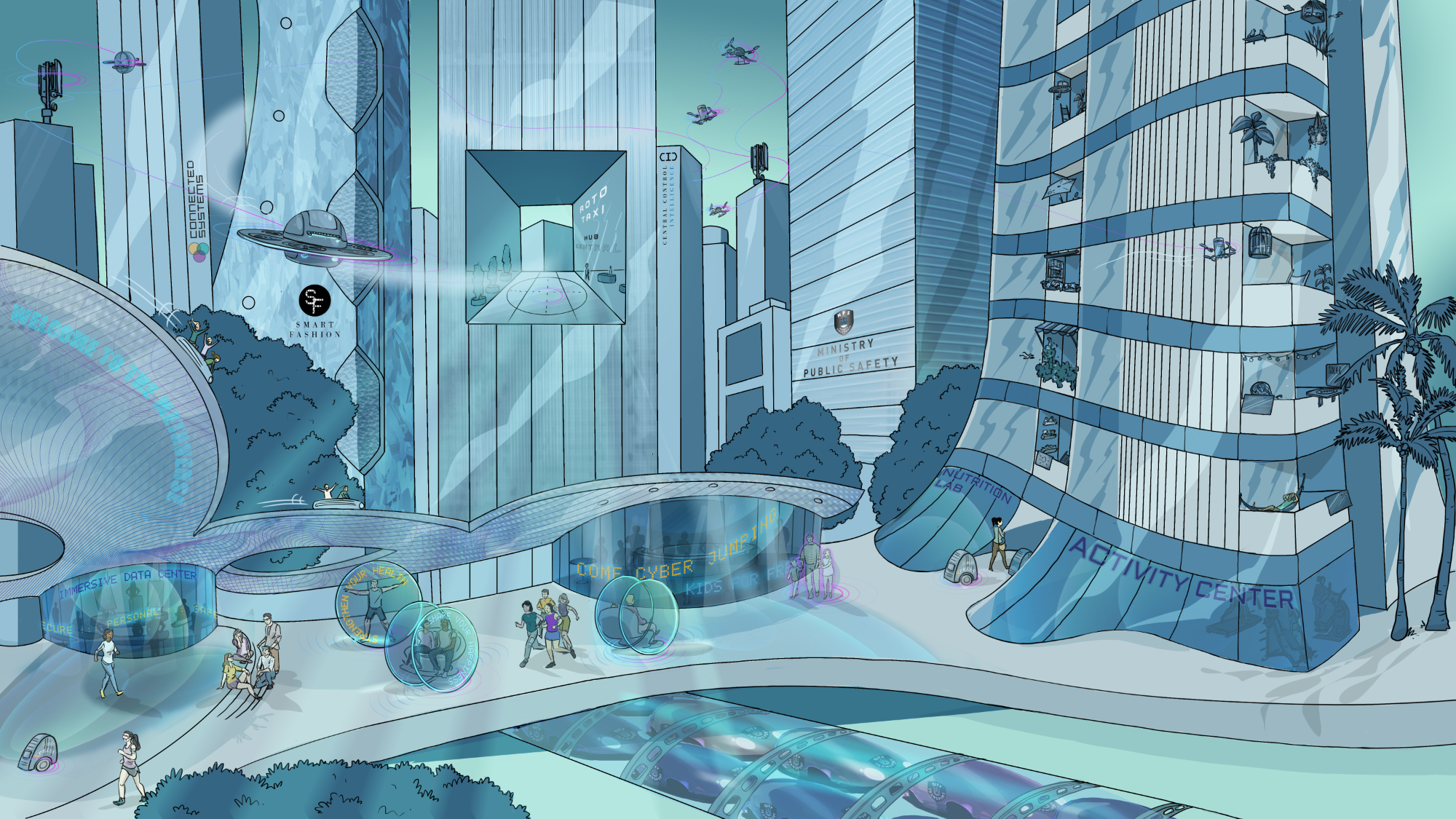Ready for the Future Today?
Reading time: 8 Minutes
How will the geopolitical situation change in the next ten years? What will our consumers' everyday lives look like in the future? What topics will move them in the future? And what are the expectations and needs that home appliances will have to meet in the future? Those who are aware of possible developments in the future can adapt to them flexibly and increase their resilience. But providing answers to tomorrow's questions today seems impossible. Christian Beck and Amira Füssel from the "Foresight Management" department disagree. Because they have looked into the future for BSH and developed four possible global future scenarios, which are intended to help us anticipate major developments. BSH Corporate Communications Editor Jenny Schiessl asked them how this works and what they found out.
Jenny: Christian, please briefly explain how the four future scenarios came about.
Christian: "To look into the future, we look at possible influences on BSH as a company as well as on the lives of consumers. Instead of a crystal ball, however, we use figures, data and facts to show how the influences we have predefined could be relevant for BSH. These 32 influences in total, also known as drivers, include various geopolitical developments, digitalization and sustainability aspects, or changes in purchasing behavior. From the huge data cloud, we calculate several million imaginable scenarios with the help of a tool that Robert Bosch also uses. From these, the tool then selects the strongest correlations – the influences that are most interdependent, such as energy consumption and climate protection, for example. So we were able to reduce the results to four scenarios that we can use as a guide in the future."
Jenny: And what do you do with the four scenarios?
Christian: “Once the four scenarios were ready, we broke them down to the household level and then looked more closely at the potential impacts on people's lives: How many people live in one household? What is their social status and schooling? What are their shopping and cooking habits? Do they use delivery services? Which home appliances play a major role? Of course, all these questions were not yet about specific product wishes, but about what is important to the consumers."
Jenny: Amira, in the first scenario, people go back to basics. Can you please explain what that might mean for society and the household of the future?
Amira: "Due to a lack of raw materials, an uncertain political landscape and growing pressure in the world of work, the importance of family and community is increasing. At the same time, financial insecurity is on the rise. Accordingly, many people live in cramped multigenerational households."

[Artist's portrayal of the future]
Jenny: In scenario two, the planet plays the leading role. How can we think of it?
Amira: "People strive for harmony with nature and live as sustainably as possible. The growing economy enables technological advances that drive ecological transformation. Both companies and citizens are taking more responsibility for their environment with new regenerative business models and green consumption."

[Artist's portrayal of the future]
Jenny: The next scenario describes new ambitions and a stable economy. What does that mean in concrete terms?
Amira: "As the stable economy copes very well with the ongoing crisis, the middle class is strengthening worldwide. Society is characterized by rather conservative values, yet sustainability is already an important issue. While the number of household members is declining, the proportion of urban living on smaller sites is increasing.”

[Artist's portrayal of the future]
Jenny: The fourth and final scenario revolves around digital utopia. What does that mean?
Amira: "In the last scenario, strong technological progress leads to a global economic boom and profound social changes. The number of small households is increasing, as are the number of different lifestyles and the intelligence of buildings. Accordingly, the world is becoming more virtual and dynamic."

Jenny: Which of these four scenarios is most likely to occur?
Christian: "The probabilities of the scenarios occurring are equal. However, I would like to emphasize that the developments and consumer needs mentioned are not mutually exclusive, but that individual aspects of the scenarios can also occur simultaneously in different regions of the world. Therefore, we should by no means prepare ourselves only for the supposedly most plausible or most desirable scenario. Only if we deal with all possible changes will we remain flexible."
Jenny: What does BSH do with the scenarios and how can we use them to become more resilient in the future?
Christian: "The scenarios are intended to help us open our eyes to future developments and prepare ourselves for them. So far, we have mainly used the results in the innovation departments to develop new product or service ideas. For example, today's Smart Kitchen Dock was developed on this basis over many iterations. The scenarios also provide a good basis for further developing our appliances. If, for example, a new appliance platform for washing machines is to be ready in eight years, we have to consider what the world might look like then and not just work with today's study status. For instance, we can assume that intelligence and the longevity of appliances will definitely become more important. We will work out exactly what this will look like in our products, for example, within the product families. This look at tomorrow definitely helps us make our products and services more future-proof and resilient.”
Jenny: In 2015, you already looked into the future for BSH. Did the predictions come true?
Christian: "At that time, we developed five different future scenarios with the outlook up to 2025+. So we're still on track, but key elements have actually already come to pass. One of them is the retreat into the private sphere – so-called cocooning, which each of us experienced ourselves because of the pandemic. Another aspect has also highlighted strong geopolitical tensions and warlike conflicts, as we are currently experiencing in Ukraine. Back then, the scenarios mainly supported us in our innovation work, but today we also want to use them for strategic planning.
What's next?
In order to increase our innovative strength and responsiveness, and thus our overall resilience, we now want to share the results with all BSH departments – for example in the form of workshops or brown-bag sessions. We are currently launching the first steps. We're happy to support where we can."




